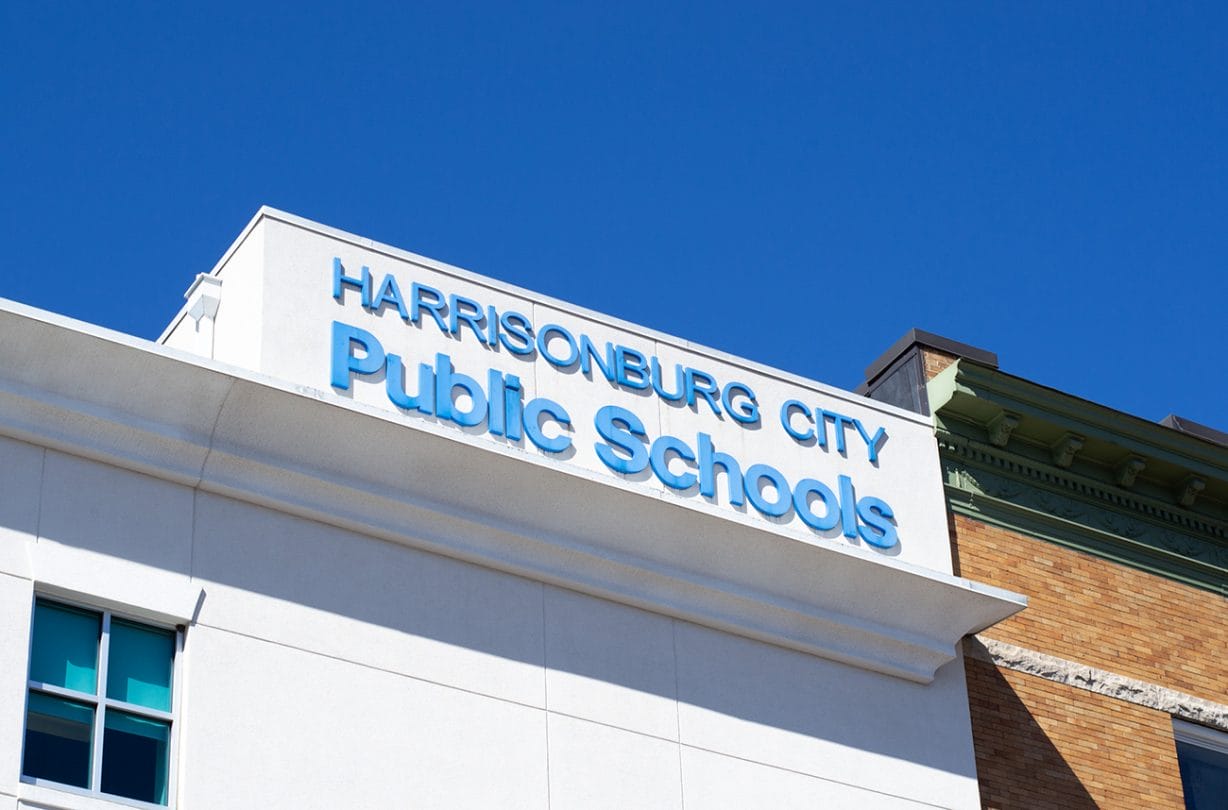By Randi B. Hagi, assistant editor
The five police officers stationed in Harrisonburg City Public Schools will be charged with focusing only on protecting schools and the people in them as opposed to monitoring student culture or “morality” this academic year, as the division works to revise its memorandum of understanding with the Harrisonburg Police Department.
The Harrisonburg School Board is expected to approve the memorandum, just for one year, in an upcoming meeting.
Superintendent Michael Richards said in Tuesday’s meeting that taking out subjective language about police monitoring culture and morality reaffirms that school resource officers “are not in the school for discipline … it’s more about being a protector of the school as opposed to looking for bad behavior in students.”
“The principal and the staff are responsible for student behavior,” he added.
School board member Deb Fitzgerald pointed out that discussing the future of school resource officers remains relevant even though most students will begin this school year virtually, because “there will still be students in our building.” For instance, under the plan for the fall 2020 semester, some students, such as those who require special education services or are English language learners, will be allowed to attend school in person, provided their parents and guardians approve.
Richards has been working with Police Chief Eric English and the division’s Chief Operating Officer Craig Mackail to revise the document that will guide this year’s school resource officers until a more permanent arrangement specific to the city’s needs can be created. And that will happen with input from community-wide conversations this school year, he said.
Officers will also no longer be permitted to execute “Terry stops,” or a stop-and-frisk of students suspected of illegal activities, although Mackail said he didn’t believe that had been practiced in Harrisonburg. He said he thought that clause was copied from other memorandums in Virginia.
“That doesn’t fit in our school division,” Mackail said. He added that English initiated the removal of that clause.
Richards also agreed Tuesday to add a clause explicitly stating that, should an attack occur on a school, the school resource officers must respond.
Vice-chair Kristen Loflin brought that topic up, referring back to a board conversation in June. At that time, the board discussed how the agreement didn’t include language stating how resource officers were expected to respond in such a crisis.
School board member Obie Hill suggested that officers could just patrol the exterior of a school rather than being stationed inside the buildings. Richards said he had floated that idea to English as well, and it would be included in upcoming panel discussions with the police department and community. Those discussions haven’t been scheduled yet.
Richards said he wanted those discussions to allow the police to voice their perspectives, as well as students and community members who oppose their presence in schools entirely.
Chromebooks for 1st-12th grades
The school board also heard from Pat Lintner, chief academic officer for the division, about what teaching and learning will look like this fall.
Students in grades 1 through 12 will all have Chromebooks provided by the division, and shortly after the start of the year, kindergartners will be given either Chromebooks or iPads, Lintner said.
Virtual instruction will begin Aug. 31 for high school students and Sept. 8 for elementary and middle schoolers. For those with questions about how to use those Chromebooks or access virtual learning tools, the week of Aug. 31-Sept. 4 will be reserved “for families to come in on a schedule … and learn a little bit more about expectations and the technology that they’ll be using,” Linter said. And the technology department will be available during the semester to field questions about devices and applications.
Different grade levels will have different start and end times for their five-hour school days, and range from one hour a day of synchronous learning at the early elementary level to four hours a day at the high school level.
That will be somewhat flexible for high school students, though, who will have access to limited course offerings that can be done totally asynchronously.
“We’re going to try to accommodate students who can’t meet in synchronous times, because many of them are working,” Lintner said.
Visual art, music and other enrichment-type courses and activities will also be available at every grade level. The board will hear an update on those plans from the Visual and Performing Arts Coordinator, J.R. Snow, in the board’s next work session Aug. 18.
Plans for the Elon Rhodes Early Learning Center have not yet been finalized, Lintner said. But many of them will have the option of face-to-face instruction as part of that “identified” group.
Also in the meeting:
- Hans Seywald, president emeritus of Analytical Mechanics Associates, an engineering and technology company headquartered in Hampton, Va., presented the benefits of using anonymous data that could be collected from temperature checks when more students are back in the school buildings. That data could track temperature trends, and potentially predict outbreaks before many infected students show symptoms.
- Several parents wrote in public comments about the plan for this semester, including how preschool and kindergartners are expected to pay attention for virtual learning and concerns about high school students experiencing “video conference fatigue.” Richards said the division would continue to update their Frequently Asked Questions page about the return to school plan.
Journalism is changing, and that’s why The Citizen is here. We’re independent. We’re local. We pay our contributors, and the money you give goes directly to the reporting. No overhead. No printing costs. Just facts, stories and context. Thanks for your support.

